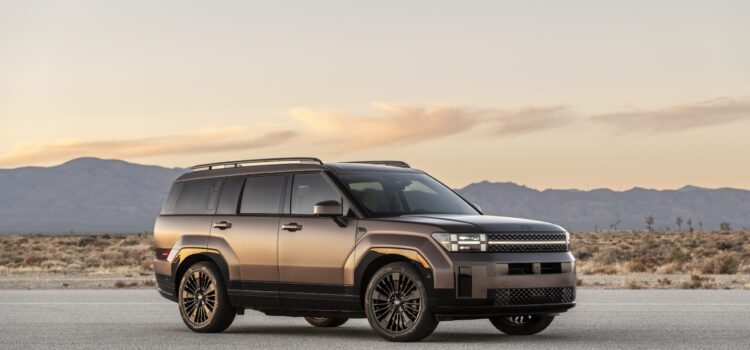2024 Hyundai Santa Fe first drive review: Finally, some personality (and a third row)
Every previous iteration of the Hyundai Santa Fe has been perfectly acceptable, but only the bargain-priced, V6-powered first-gen crossover raised any eyebrows. Since then, the South Korean utility player has been content to provide its owners with adequate driving dynamics, decent packaging, and a great warranty, as is the trend with Korean automakers in general lately. As for individuality, well, the Santa Fe was about as forgettable as they come.
That changes with the 2024 Hyundai Santa Fe. One need look no further than the bold, pixelated styling for proof of personality. In the name of detail, the boxy crossover now features a standard turbocharged 2.5-liter four-cylinder, three rows of seats, extensive technology, and a surprisingly rugged XRT trim level. Hyundai’s wallflower is blooming and bloomin’ great.
[Button id=”512″]
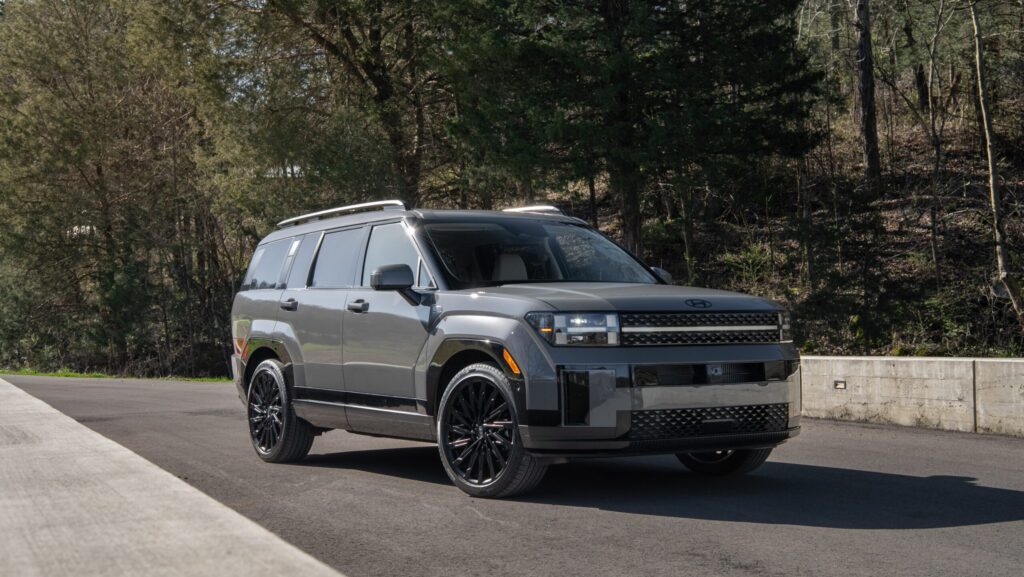
Price and specs
| Base price: | $35,345 |
| Price as-tested: | $49,695 (Santa Fe Calligraphy AWD) |
| Engine choices: | 2.5-liter turbocharged inline-four |
| Transmission choices: | 8-speed dual-clutch automatic |
| Drivetrain choices: | Front-wheel drive, all-wheel drive |
| Horsepower: | 277 horsepower |
| Torque: | 311 pound-feet |
| Weight: | 4,486 pounds |
| 0-60: | TBA |
| ¼-mile: | TBA |
| Towing capacity: | 3,000 pounds, 4,500 pounds (XRT) |
| Cargo space: | 14.6 (third row up), 40.5 (third row down), 79.6 cubic feet (third and second row down) |
| MPG: | 20 city, 29 highway, 24 combined (FWD), 20 city, 28 highway, 23 combined (AWD), 19 city, 26 highway, 22 combined (AWD XRT) |
| Fuel capacity: | 17.7 gallons |
What’s new?
Eight-bit styling
The 2024 Hyundai Santa Fe is an all-new design, sharing little with its predecessor. Numbers? It rides on a 110.8-inch wheelbase, up two over the old Santa Fe, and overall length is up by 1.8 to 190.2 inches total. The new, so-called MX5 platform—no relation to the Mazda roadster, obvi—also gives the Santa Fe a shorter front and longer rear overhang, which is good news for cargo space.



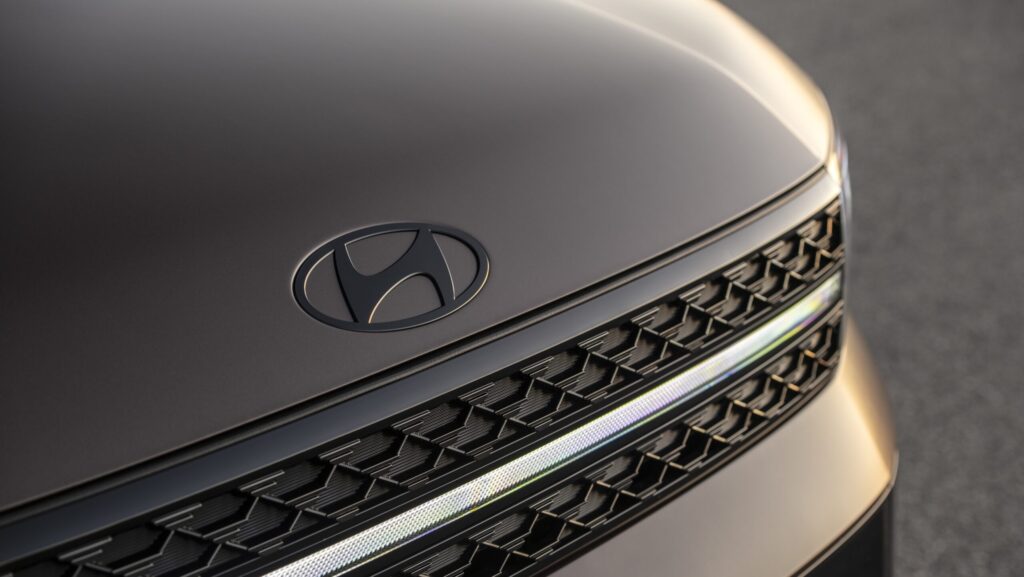
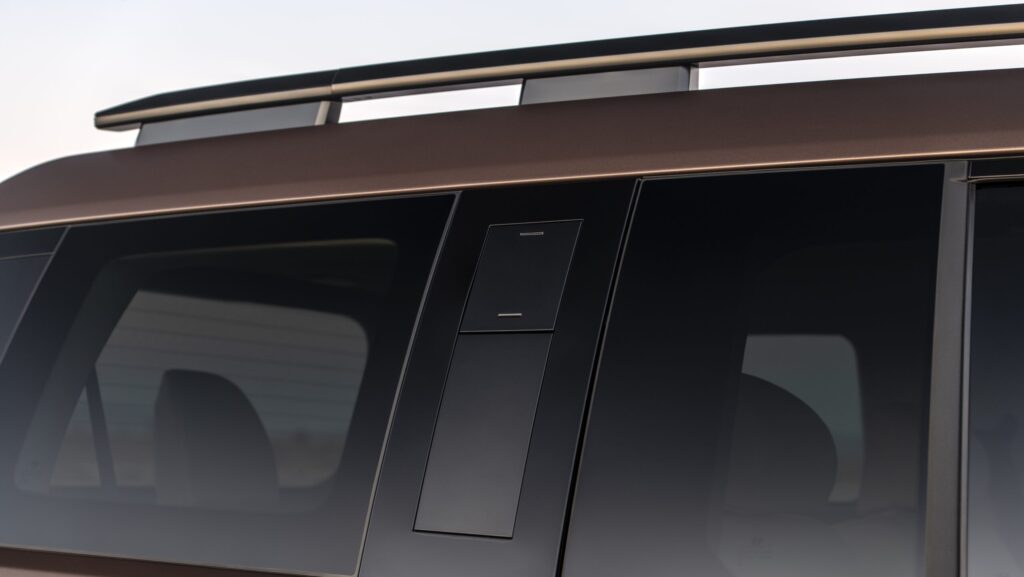
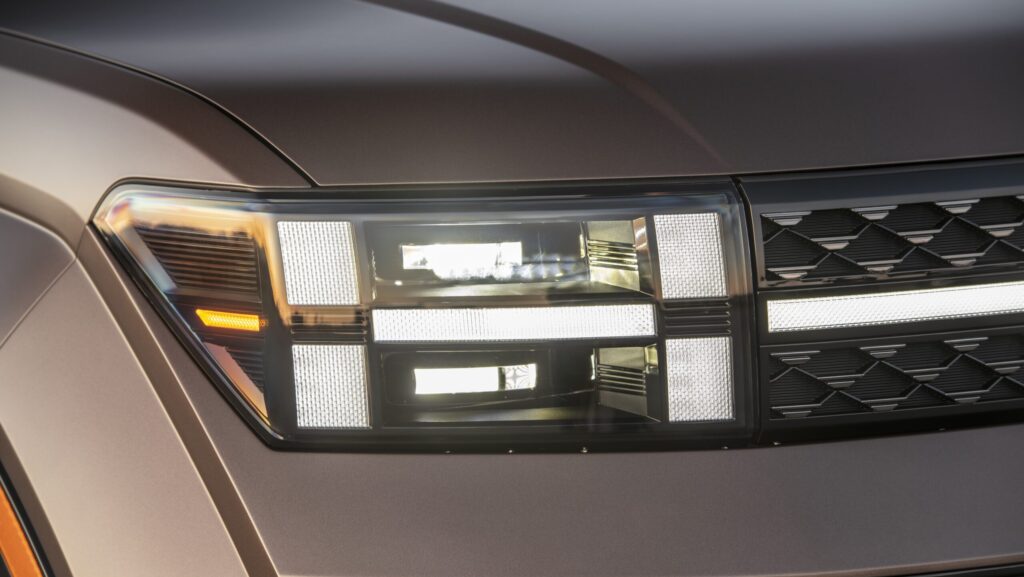
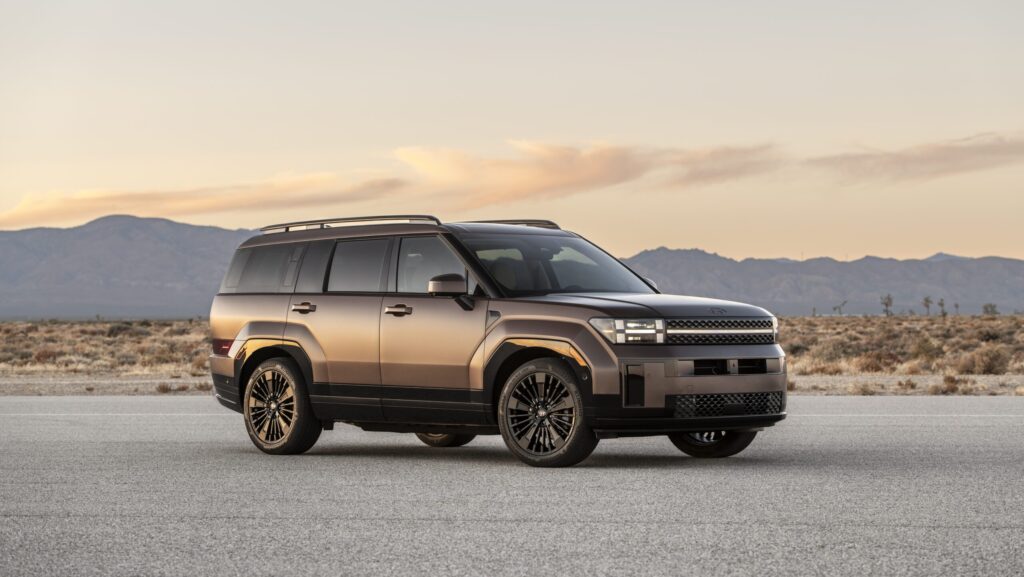
Hyundai made the most of that larger footprint by giving its mid-size SUV a boxier, more upright design. The square rear end provides the Santa Fe 40.5 cubic feet of cargo space behind the second row, up from 36.3 on the previous version, and the liftgate opening is a staggering 5.7 inches wider and 2.0 inches taller. There’s also a standard third-row seat, with a surprisingly healthy 14.6 cubes of cargo room with all the rear seats in place. Overall interior room is class-leading, beating out the five-seat Honda Passport and Subaru Outback, as well as the seven-seat Kia Sorento.
The cubist exterior looks nothing like any other Hyundai before it. “We want our cars to look like a chess set, not Russian nesting dolls,” said Hyundai North America Head of Design, Kevin Kang. The rook of the group gets a bluff front end, H-pattern daytime running lights, vertical roof pillars, and funky-cool gloss black wheel arch surrounds that make the fenders look beveled and square. To top it all off—literally—there’s a battlement of roof rails standing tall and proud. Despite this squared-off design, the Santa Fe achieves a commendable 0.29 coefficient of drag thanks to air curtains in the front bumper and clever underbody aero management.
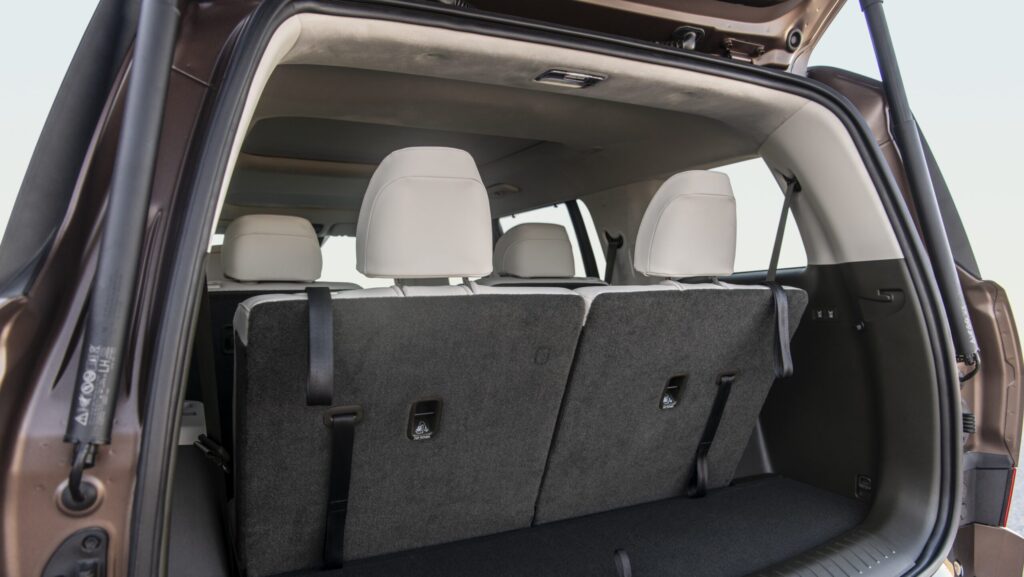
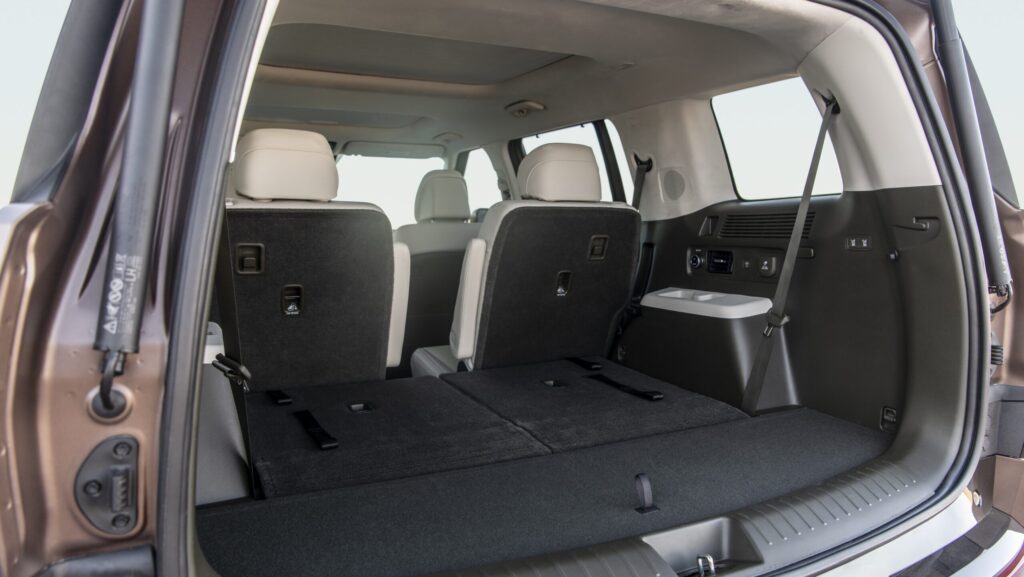
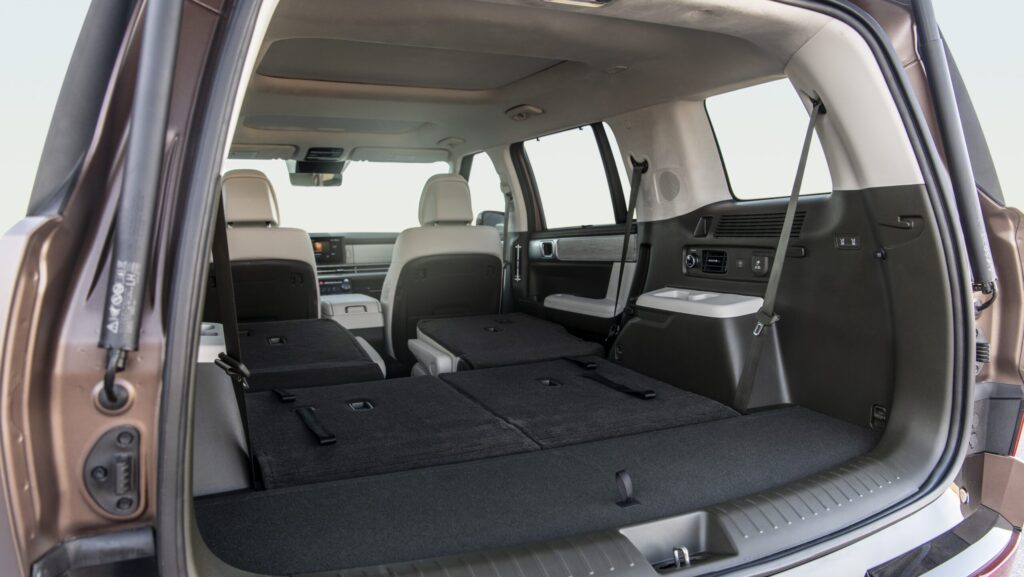
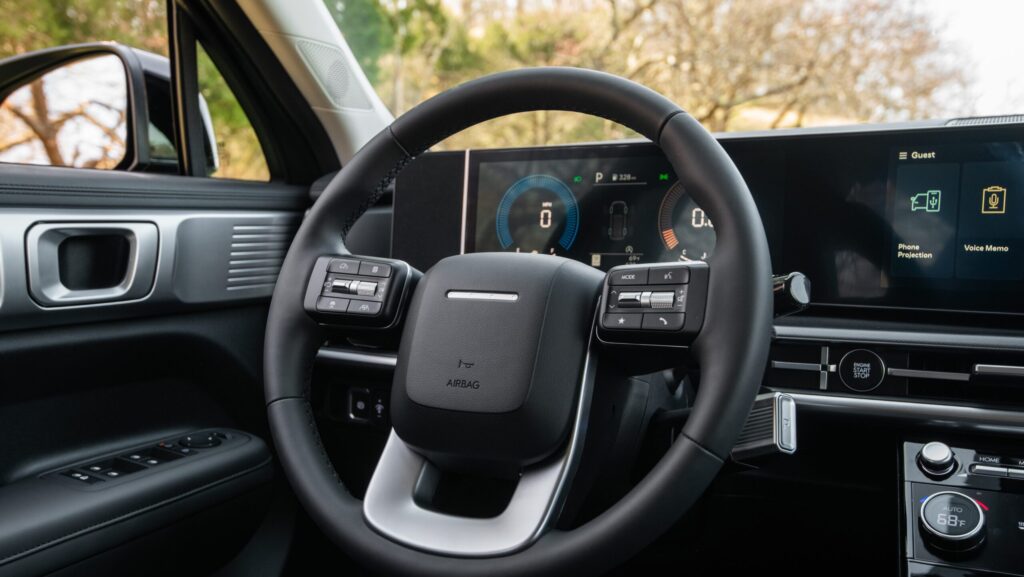
Handsome, tech-focused interior
Inside, the Santa Fe looks a lot like other Hyundai products, especially the top-trim Calligraphy model with its matching 12.3-inch screens for both the instrument cluster and infotainment system. The instrument panel is very rectilinear à la Ioniq 6, although there’s some clear Range Rover influence in the four-spoke steering wheel. The tech suite is familiar, but Hyundai did add one crucial improvement. Wireless Apple CarPlay and Android Auto have finally arrived on the automaker’s larger infotainment screen, made all the better with a pair of wireless chargers located side by side on the console.
Other new tech features include a more advanced version of Digital Key that no longer requires the driver to hold their phone up to the door to unlock or to the dashboard to start the Santa Fe—now you can just leave your phone in your pocket or bag, just like a proximity keyfob. Furthermore, Hyundai promises that Bluelink services will be free with no expiration for the original owner, a nice break from the subscription paywall that some automakers are erecting. Bluelink includes safety alerts and maintenance reminders, as well as smartphone-connected remote start, locking, and unlocking. It’ll also allow owners to set valet and teen-driver parameters for a little extra security and control.
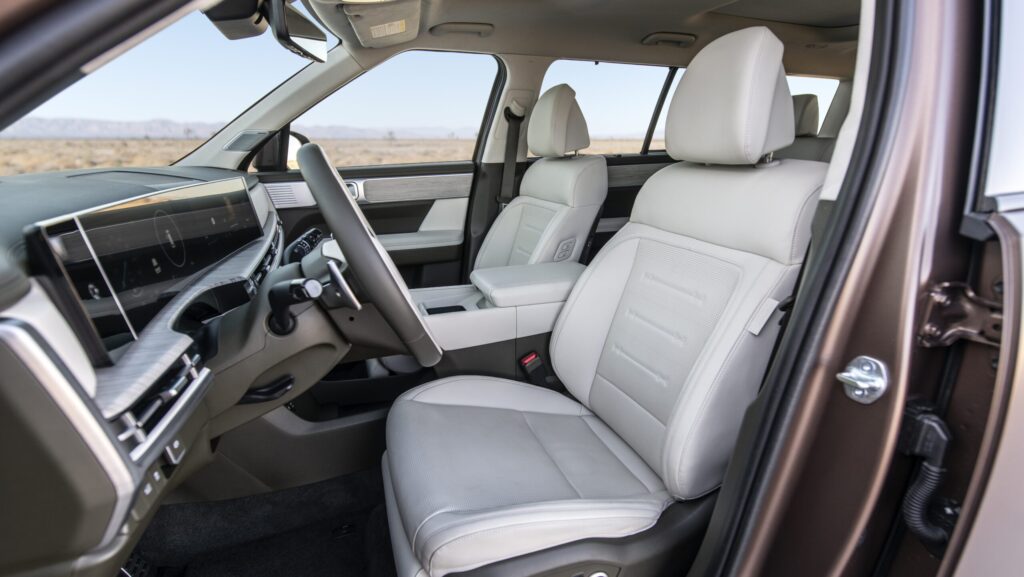
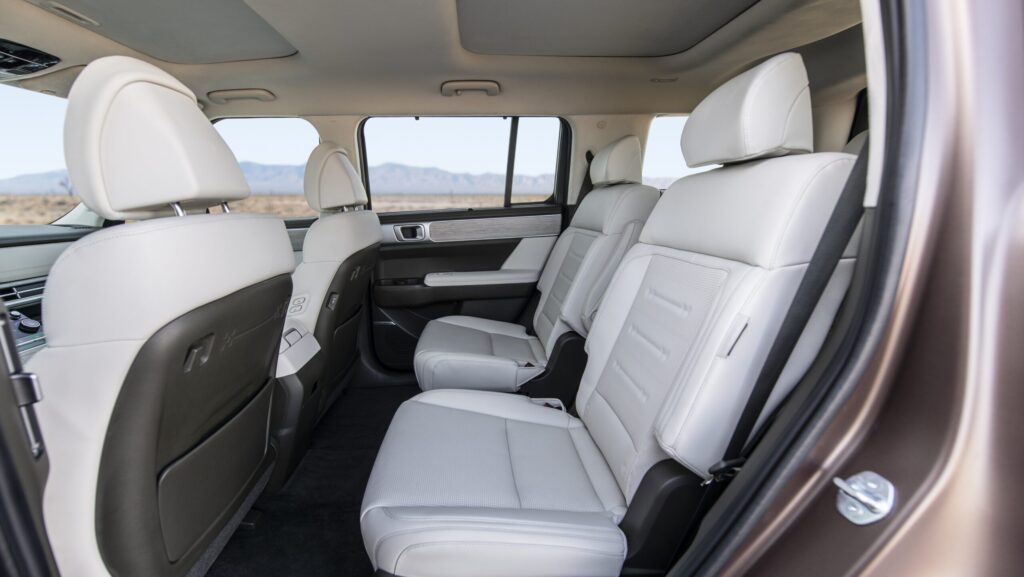
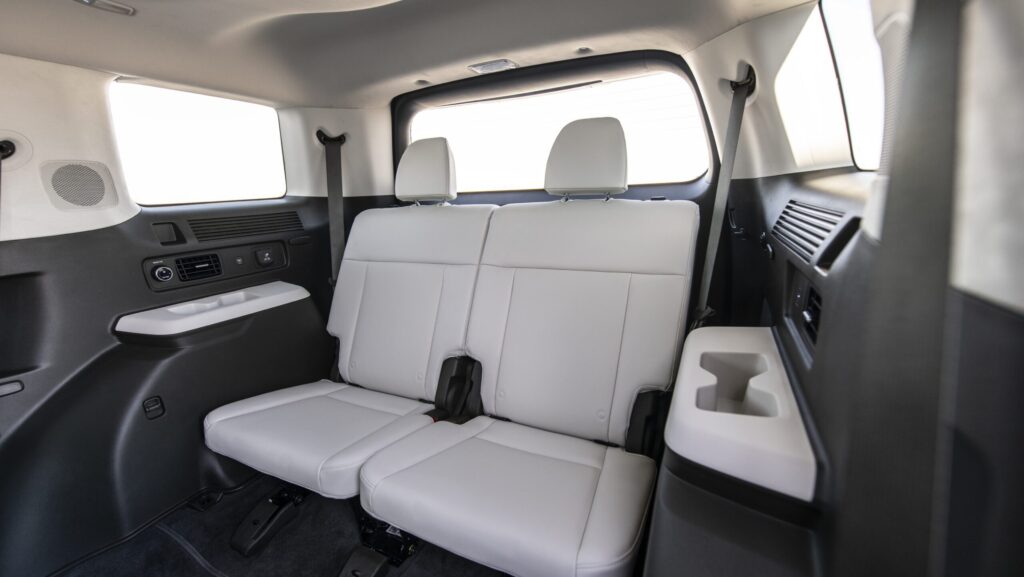

In front of the passenger are three distinct storage areas: an enclosed bin on the dash fascia (with a UV-C sanitizing system on the Calligraphy), a conventional glovebox, and an open slot in between the two. There’s also a floating center console with storage underneath, a dual-action cubby armrest that both front and rear passengers can access, and a drawer-style bin for the second row. Add it all up, and there are plenty of places to stash road snacks, phones, wallets, pocketbooks, handbags, etc. Two USB-C ports appear everywhere on the console, with two more on the front seatbacks for second-row passengers. The third row even gets its own 120-volt inverter to keep devices charged.
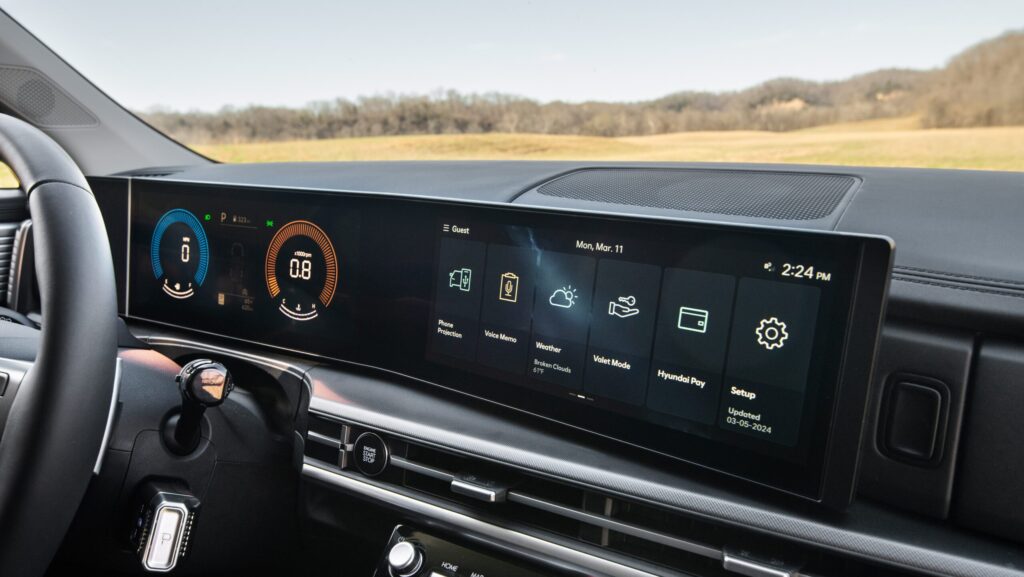
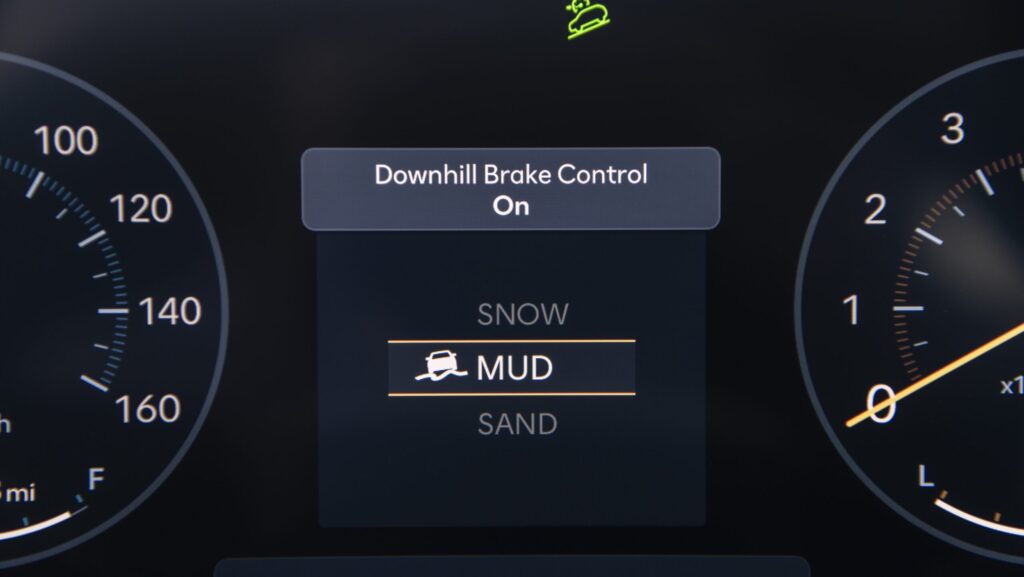
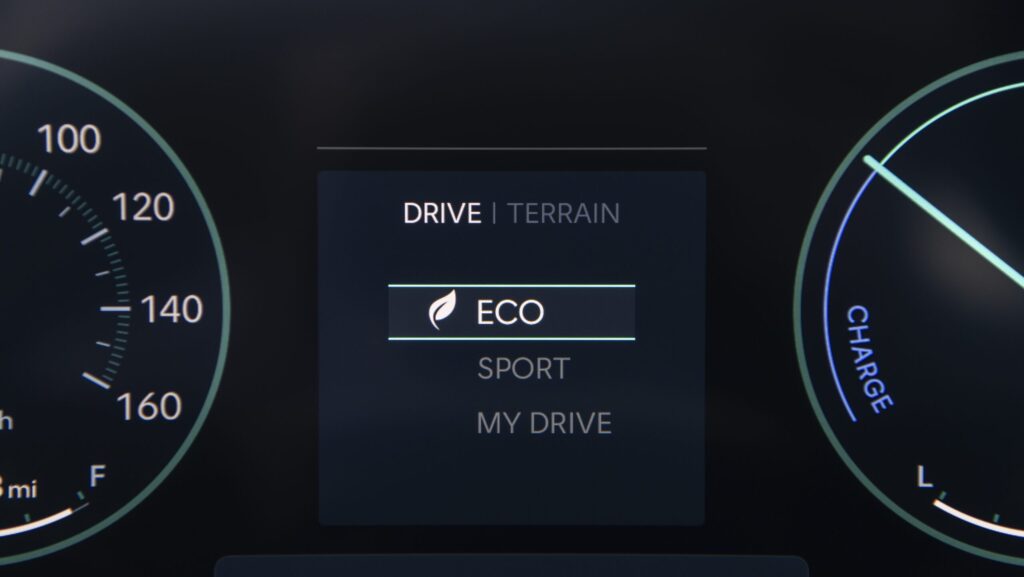
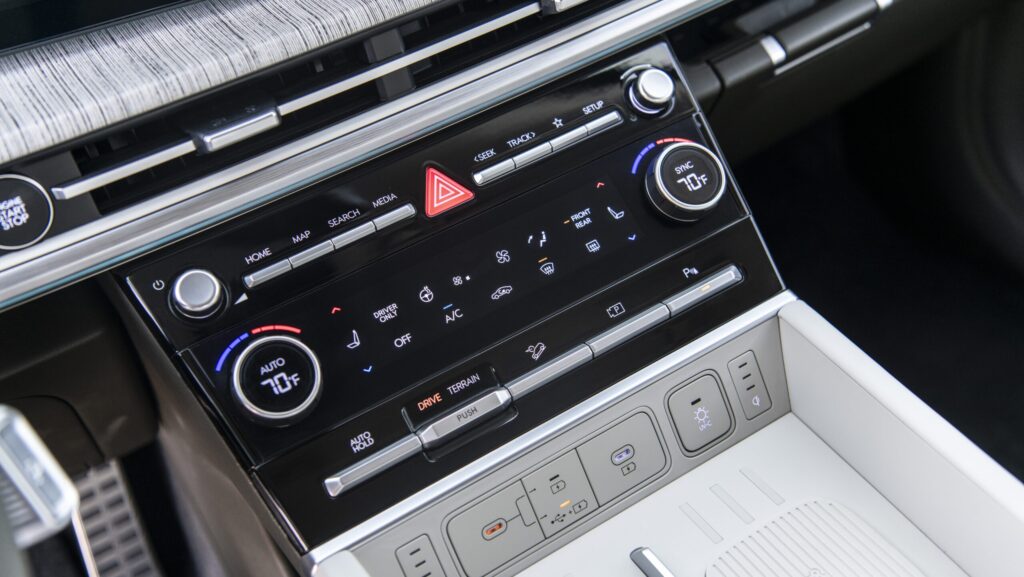

Newly standard power and performance
Mechanically, the Santa Fe is hugely improved over its predecessor. For now, the only powertrain available is a turbocharged 2.5-liter four-cylinder, making 277 horsepower and 311 pound-feet of torque and mated to an eight-speed dual-clutch transmission. Front-wheel drive is standard on the SE, SEL, Limited, and Calligraphy trims, with all-wheel drive available as a $1,800 option; the ruggedized XRT trim gets it standard, appropriately enough.
That XRT, by the way, offers Hyundai’s first-ever factory-fit set of all-terrain tires. It also gets 8.3 inches of ground clearance (up from the standard Santa Fe’s 7.0 inches), giving it more under-car room than the Kia Sorento X-Line and Honda Passport Trailsport—though the Subaru Outback still wins with 8.7 inches of ground clearance. The XRT doesn’t include an off-road driving mode, but Hyundai retuned the stability and traction controls for rough-road duty. The Santa Fe’s all-wheel-drive system allows for a 50:50 center differential lock, which is not always common in modern crossovers.
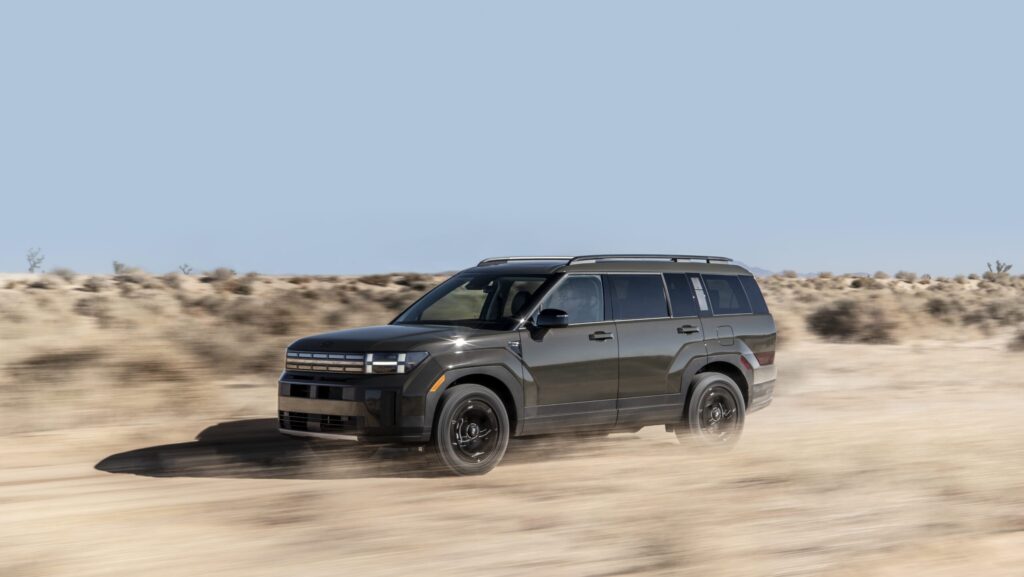
Within the next few months, Hyundai will release the Santa Fe Hybrid, which will be offered in SEL, Limited, and Calligraphy trims. The electrified crossover will combine a turbocharged 1.6-liter four-cylinder, 44.2-kilowatt electric motor, and 1.5-kilowatt-hour lithium-ion battery to produce a total of 231 horsepower and 271 pound-feet of torque. A six-speed automatic transmission is standard, as is front-wheel drive. All-wheel drive is again a $1,800 option.
What’s it like to drive?
On the open road
Thanks to the crisp-shifting eight-speed DCT and torque-rich engine, the Santa Fe gets up to speed smoothly and quietly. With more than 4,000 pounds to haul around, the powertrain isn’t outrageously fast, but I never felt concerned about making quick two-lane passes on hilly Tennessee backroads. The newly standard turbo engine is a huge upgrade over the 191-horsepower atmospheric 2.5-liter on the old Santa Fe, which felt lethargic when asked to hustle.
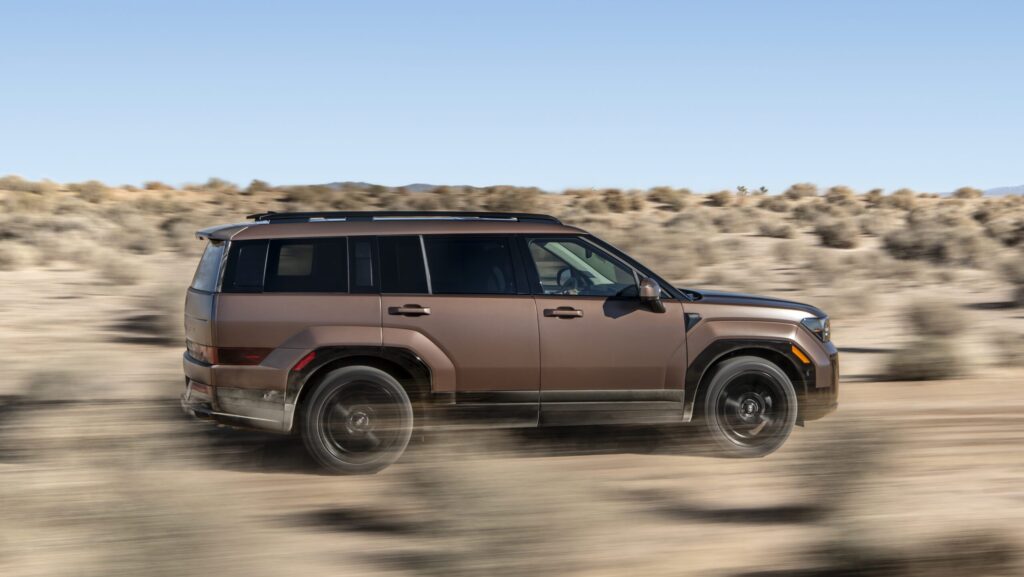
Hyundai paid special attention to noise insulation, knowing that the boxier interior would naturally be more susceptible to booming noises. Yet, even over gritty pavement or gravel, the cabin remains serene and quiet, and the ride is well-damped and smooth. At freeway speeds, wind noise is generally well-controlled, although the elevated roof rails may have contributed to some rushing sounds I heard when traveling above 75 miles per hour. Only the pickiest ears will take umbrage, though.
The front row is very comfortable, especially on the Calligraphy trim that includes heated and ventilated seats, a heated steering wheel, a litany of power adjustments, and lovely Nappa leather upholstery. My driving position never felt quite right, and I found myself wishing the telescoping steering wheel would extend further so I wouldn’t have to scoot closer to the pedals. What’s more, the helm’s angle is slightly bus-like; when adjusted so I could see the entire gauge cluster, I felt like the wheel was angled toward my shoulders, not my chest. Still, I grew accustomed to the reach-rake after several minutes and never felt achy or uncomfortable in my four hours behind the wheel.
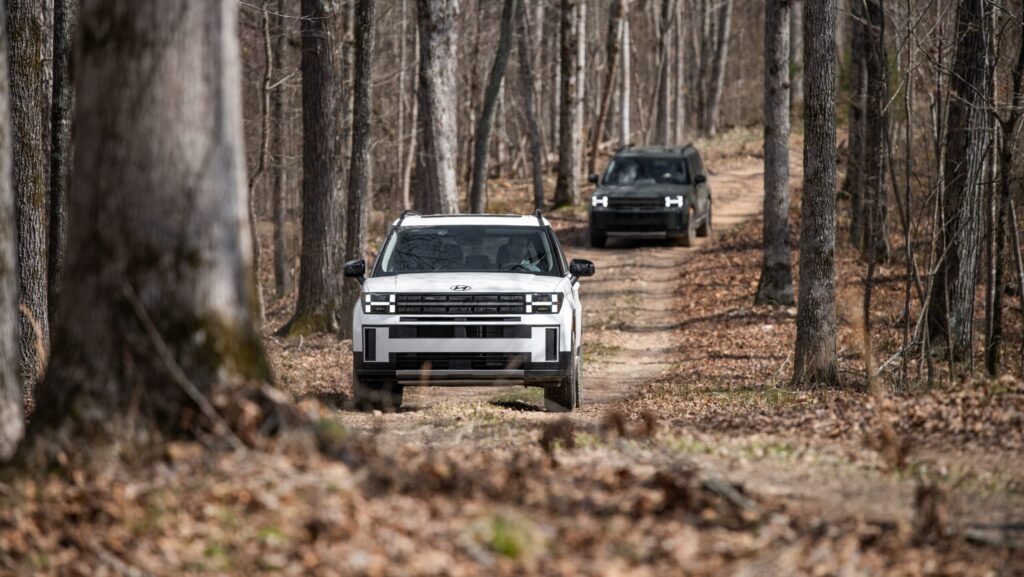
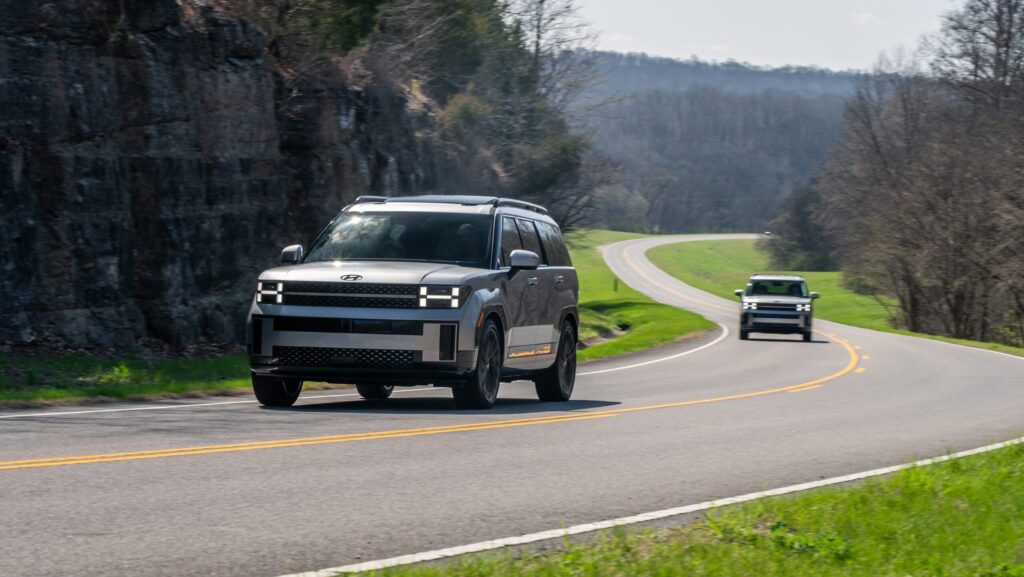
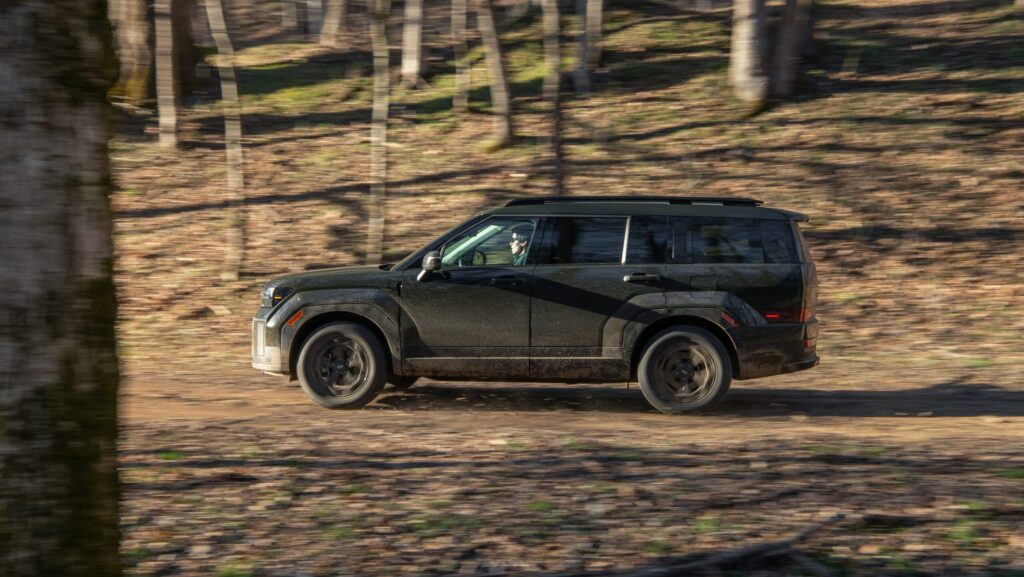
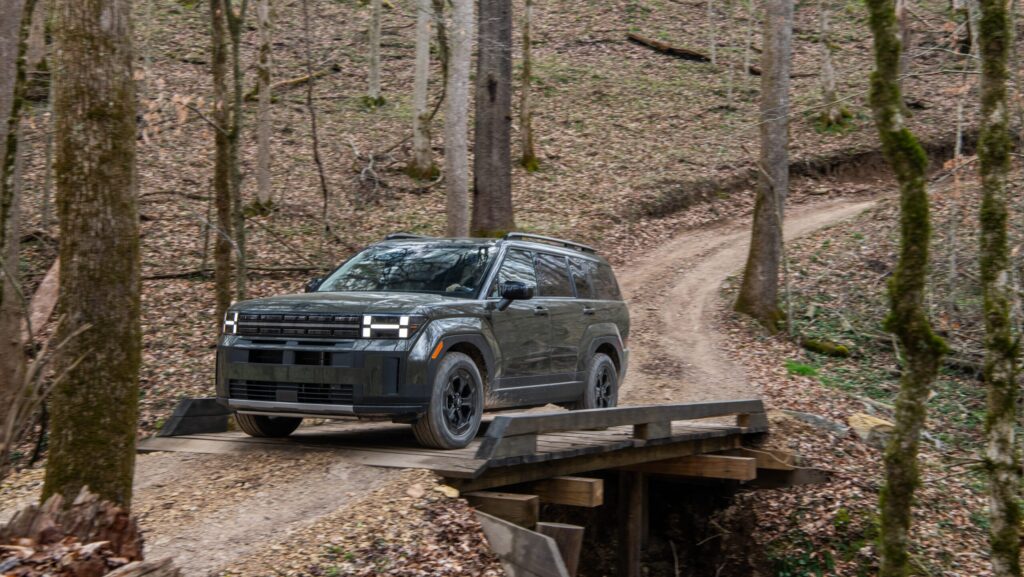
The front right seat of the Calligraphy gets all the same comfort and adjustability as the driver, and occupants of the second-row captain’s chairs enjoy fore-aft and recline adjustments, deployable armrests, and a supportive seat profile to get themselves perfectly situated. The third row is small, and anyone measuring above five feet tall will get intimately acquainted with their knees on a long drive. But for kids, short distances, and emergency carpool situations, the standard way-back is a nice feature to have.
The confident ride begins to erode somewhat as the pace quickens, with some noticeable body lean in sweeping corners. But arguing about quick transitions in a family crossover is decidedly silly, so I’ll just say that the Santa Fe’s competent, sedate handling will inspire neither fear nor enthusiasm. Ditto the feather-light, accurate, and numb steering. It’ll do the job just fine, and that’s all one could expect.
Out in the woods
After several hours in a Calligraphy, I swapped into a Santa Fe XRT for a quick 30-minute jaunt on some of Tennessee’s easier off-road trails. Like other all-wheel-drive Santa Fes, the XRT has downhill assist control and the aforementioned locking center differential, but the real party piece is the all-terrain rubber sourced from Continental. The added ground clearance is a nice boon as well, imparting a bit more driver confidence when traversing the rough stuff.


The first segment of the off-road course was relatively easy, but the second portion included some rivulet crossings that maxed out the Santa Fe’s relatively limited articulation and left a front or a rear wheel hanging in the air. Here, Hyundai’s retuned stability control came good by letting me keep my foot on the throttle and letting the software send power to the wheels on the ground instead of the one in the air. Hard-core off-roading would require a low-range transfer case and more wheel travel, but a fire road or mountain trail needn’t deter the XRT driver from finding that perfect campsite or fishing hole.
[Button id=”416″]
A family SUV with some attitude
Whether choosing the value-oriented SE, the loaded Calligraphy, the ruggedized XRT, or anything in between, the 2024 Hyundai Santa Fe is an impressive three-row crossover. Its starting price of $35,345, including destination, is dearer than that of the Honda CR-V, Toyota RAV4, Subaru’s Forester, and Outback, but the Hyundai is vastly more powerful and spacious than those products. Compared to the $42k-and-change Honda Passport, the Santa Fe is both torquier, cheaper, and more efficient, and it offers more cargo room behind the second row and the convenience of a third row when needed.
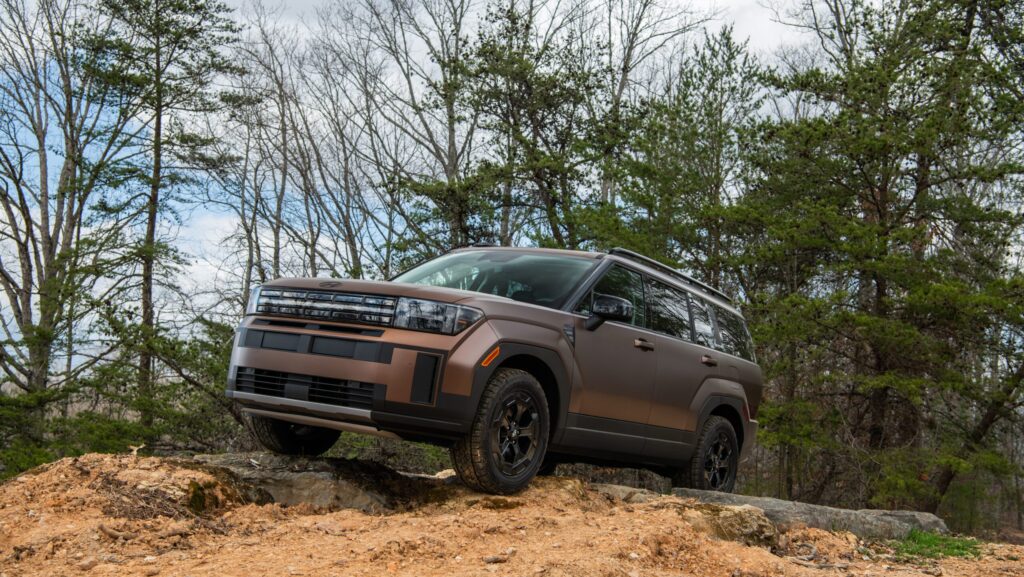
Beyond those left-brain attributes, the Hyundai Santa Fe is also interesting to look at. It’s quiet and smooth on the open road, and it appeals differently from its predecessors. No longer bland and blasé, it is yet another boldly styled and well-executed product from the South Korean brand.

